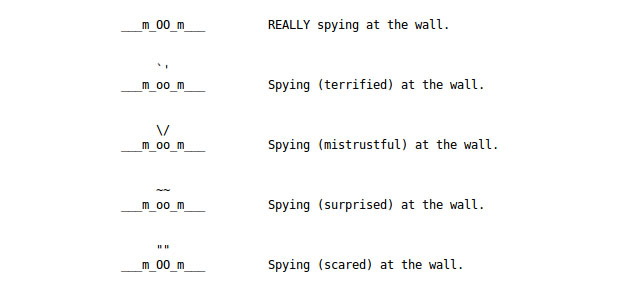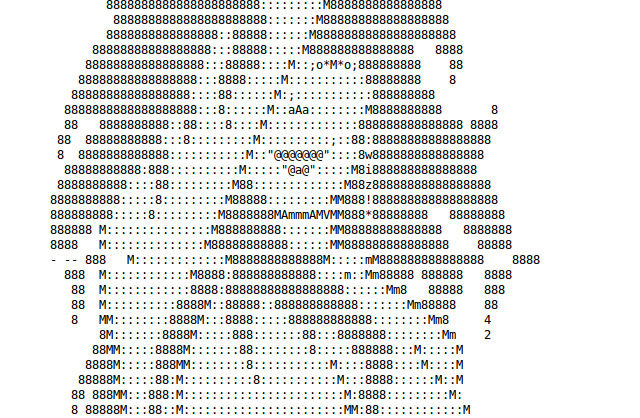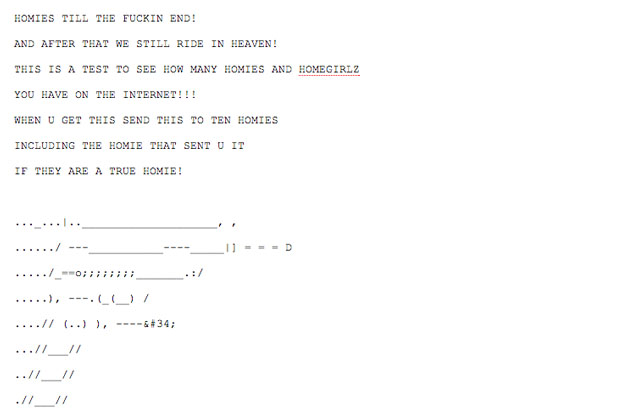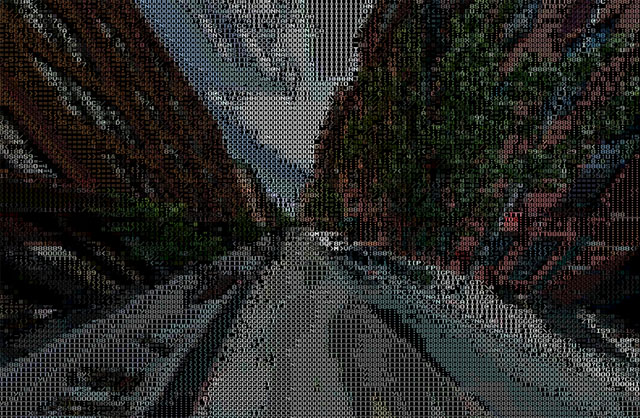ASCII — aka the American Standard Code for Information Interchange, aka the numeric codes that represent those little shapes on your keyboard — turns 50 this year. And while it’s since been surpassed by UTF-8, it still holds a special place in our hearts (and computers).
Yesterday we got a deep dive into the history of ASCII art thanks to Rhizome’s Tom McCormack, who leads us from the text art ephemera of the 1910s to the sexy ladies of anonymous late 1980s ASCII artists. When it was first published in 1963, ASCII was a coding standard, cut and dry. But later, in the era of Usenet, users began illustrating their posts with characters and animals. Before long, ASCII had evolved into a graffiti-like language for staking claims and making jokes amongst the internet’s earliest users. According to McCormack, art made with text articulated the optimism and excitement of the early web:
ASCII art was an aesthetic foreshadowing of what would become the culture’s social vision for the Web: the Internet would be the paradisaical city of our dreams; the ultimate melting pot; the high-tech global village we’d been promised. Home to a natural, nearly-inevitable democratic virtue, it would be a place where your identity could merge with the crowd, and even be shed entirely; and a super-speed air-tram could transport you from uptown to down in the amount of time it takes to register for a gonzo pornography subscription service.
Obviously, that vision of the web didn’t exactly turn out as planned (we get our gonzo pornography for free, thank you very much!). The web browser came along, and with it the image file. ASCII art was relegated to the fringe, where it flourished through the 1990s. But not all was lost: ASCII art gave birth to another very current part of our digital vernacular — emoji. More on that in the next chapter of McCormack’s saga.

The first emotion-esque characters, hailing from the early 1980s.

“Horny Giant Girl spying at the wall,” another hit from the mid-1980s.

An early 2000s specimen from the artist Roy was done in “newskool” style, which usually incorporated actual words.

An ASCII chain email from the early 2000s.

Peter Nitsch’s ASCII Street View turns Google Street View into text, a project Gizmodo covered in 2012.
[Rhizome]
